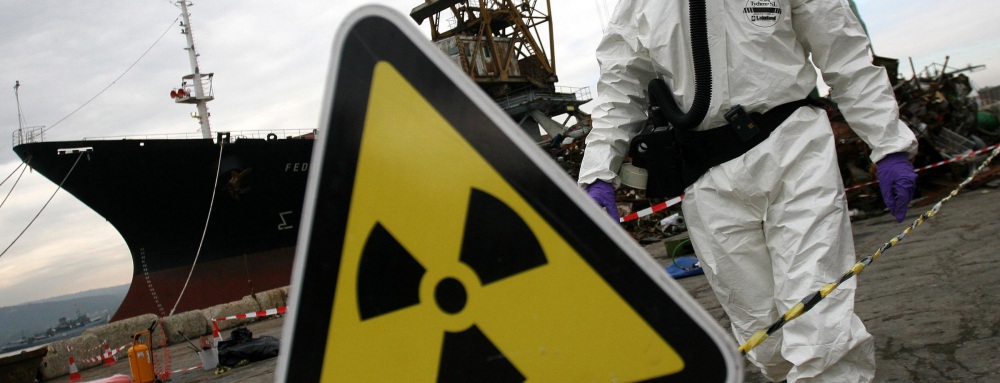
Corey Hinderstein
Vice President, International Fuel Cycle Strategies
NTI’s Corey Hinderstein and Andrew Newman co-authored with Ole Reistad of the Norwegian Institute of Energy Technology an article in The Bulletin of the Atomic Scientists calling for a change in the conversation on highly enriched uranium (HEU) from minimization to elimination. Below is an article summary:
Today, there are approximately 1,440 tons of HEU in the world, some of it poorly secured. Because this material an ideal target for terrorists seeking to build a nuclear weapon, efforts are underway to reduce, secure, and consolidate stocks of HEU. But simply minimizing the use of HEU is no longer sufficient to combat the risk of nuclear terrorism. The international community’s efforts must now turn to elimination, with an initial focus on enhanced transparency and developing stronger international standards for the management of existing HEU inventories.
Low-enriched uranium (LEU) has proved acceptable for virtually all civilian applications, and there are few remaining technical barriers to the elimination of HEU use in civil and military applications. Important technical and political progress has been made through initiatives like the Reduced Enrichment for Research and Test Reactors program, the 1993 Megatons-to-Megawatts agreement between the United States and Russia and the Nuclear Security Summit process. The authors note that since 1978, “62 HEU-fueled research reactors have been converted to use LEU fuel and 17 reactors have been shut down in 36 countries.” Progress has also been made in the medical-isotope industry, where most producers have pledged to convert their reactors and targets to use LEU by 2016.
The United States’ Global Threat Reduction Initiative, in particular, has had significant impact on HEU minimization efforts, offering incentives such as new fuel, new facilities and technical upgrades to countries concerned that conversion to LEU might have negative economic consequences.
Despite these positive trends, there is no universal consensus on HEU minimization or elimination. Thus, one of the key missions for the international community is to establish an irreversible elimination norm.
On the road to such a norm, challenges remain. Not all officials are convinced of the urgency of the problem. There is also a lack of transparency surrounding activities involving HEU that makes it difficult for policymakers and analysts to appreciate the scope of the problem. Furthermore, many of the reactors that have yet to be converted are the most technically challenging and do not yet have conversion or shut-down paths.
Russia presents a unique challenge. Although it has played a significant role in removing HEU from other countries, it has been unwilling to accelerate its own conversion and elimination efforts. The authors suggest Russia undertake a strategic plan on science and technology in order to determine how many research reactors and critical assemblies are actually needed for the state to fulfill its scientific mission.
Finally, HEU used in naval reactors that power aircraft carriers and submarines presents an enormous barrier to progress. These materials have largely been kept out of the HEU minimization discussion. To date, technical obstacles and operational priorities have kept the U.S. and Russia from exploring conversion to LEU, while both countries and the United Kingdom still hold massive stocks of excess HEU in reserve earmarked for future naval use.
The U.S. is reviewing its plans for the next generation of nuclear submarines but has so far indicated no interest or willingness to consider an LEU-based reactor for its new boats, which could impact the prospects for global HEU elimination. Russia, for its part, has an opportunity to set an example with its next generation LEU-fueled icebreaker reactor that could, technically, be used to power its nuclear submarines and fuel the barge-mounted power plants that Russia hopes to sell commercially but Russian officials have not expressed an interest in this approach to date.
The authors recommend policy changes in six areas:
The fact remains that the less HEU that exists, the less opportunity there is for a terrorist group to acquire the material needed for a nuclear bomb. As the authors note: “Access to highly enriched uranium is the piece of the terrorist puzzle that is most within our control.” The conversation must now shift from minimization to elimination.
To read the full article, click here.
The final, definitive version of this paper has been published in The Bulletin of the Atomic Scientists, Volume 68/Issue 4, July/August 2012 by SAGE Publications Ltd./SAGE Publications, Inc. All rights reserved. ©
Sign up for our newsletter to get the latest on nuclear and biological threats.
The NTI Index is recognized as the premier resource and tool for evaluating global nuclear and radiological security.
Nuclear and radiological security aims to ensure nuclear and other radioactive materials are secure from unauthorized access and theft, and that nuclear facilities are secure from sabotage.
The under-the-radar success story of U.S.-Chinese cooperation to convert reactors from HEU to LEU to reduce proliferation and nuclear terrorism risks. (CNS)

